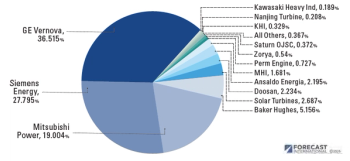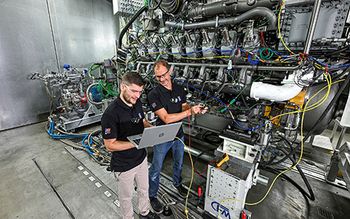
CENTRIFUGAL COMPRESSORS SHOP TESTS
USERS SHOULD BECOME FAMILIAR WITH MECHANICAL RUN TESTS, THERMODYNAMIC PERFORMANCE TESTS, FULL-LOAD, FULL-SPEED STRING TESTS AND OTHERS
Users test centrifugal compressors at OEM facilities to validate the design and to ensure they meet required performance criteria. The best results are obtained if the user is familiar with the execution and expected benefits of mechanical run tests, thermodynamic performance tests, full-load, full-speed string tests, and other needed tests.
In this regard, a shop test witness team should be formed. Ideally, it would comprise at least one compressor engineer involved in detailed engineering, a turbomachinery maintenance engineer and a vibration analyst.
At least one week before witnessing the test, the user should approve the procedure proposed by the OEM. The purpose of this step is to verify compliance with acceptance criteria for the following:
• Relevant codes and standards
• Schematic diagrams and test rig setup, complete with data acquisition system details
• Test loop gas composition
• Compressor shaft vibration during steady state and transient operation
• Lube oil and pad temperatures
• RPM and equations of state, which should follow ASME Performance Test Code (PTC) 10/ISO 5389 guidelines.
A four-hour mechanical run test of a compressor is conducted in a closed-loop circuit to validate rotor design without any damping occurring, except by the bearing system. It is strongly advised not to conduct the test in a vacuum. Instead, a low-density inert gas or gas mixture should be used. It is preferable to use contract coupling for the compressor or a moment simulator within a maximum margin of 5%.
The vibration data acquisition system must be capable of showing filtered and unfiltered Bode plots of shaft vibration phase amplitude, polar plots, shaft centerline and the vibration spectrum up to a certain number of blade harmonics if vane diffusers are used in the compressor. The vibration spectrum should not show significant vibration peaks at frequencies other than the running speed or double the running speed.
Note that most data acquisition systems are insensitive to shaft displacement if they are below three microns (peak-to-peak). In that case, one should look into phase change rate to determine shaft critical speed. Additionally, due diligence should be exercised in selecting the unbalance mass to be added to excite the rotor at its first critical speed, i.e., 4W/N or 32W/N considering the labyrinth and rotor gap. (W is unit load on bearing and N is operating speed.)
During an unbalance response test, if the unbalance weight is fixed in the coupling half, this may sometimes excite the second natural frequency of the rotor bearing system. It is preferable that unbalance tests be carried out just after high-speed balancing in a vacuum bunker so that correct rotor midspan unbalance can be created.
Thermodynamic test
For variable speed compressors, a minimum of five points should be taken at each test speed. These points simulate the range of the minimum-to-maximum continuous speed of the machine. Curve shape is based on the selection of the proper degree of polynomial curve fitting, as this is an important tool for compressor mapping at the site.
Balance line and inter-stage seal leakage flow must be addressed by a similitude equation to validate the predicted leakages during real case operation at site. Figure 2 below shows a typical in-house similitude verification calculation for a type-2 test.
Detection of the surge point at a particular speed during a type-2 performance test is generally based on criteria such as flow and discharge pressure instability (deviation in the read out by more than 5 %).
If the actual machine Reynolds number is in or above the order of 1,000,000, correction should not be allowed. If the subject is a high-pressure injection compressor, OEM calculations must be reviewed before approving the correction method that can be validated at PTC Type-1 test.
A full load full speed (FLFS) train string test combined with a PTC 10 type-1 may be the best analysis tool for rotor stability on any compressor being used for critical unspared operation. User witnesses must keep a close watch on sub-synchronous vibration levels. In addition, other harmonics in the shaft vibration spectrum should be watched for at least four hours.
An FLFS test can be used to detect subsynchronous vibration for a surge or rotating stall (10% to 30% of the synchronous frequency). It can also reveal coupling problems, lateral–torsional interaction due to the gear box, the extent of rotor bow, as well as lubricating oil foaming issues and possible rotor rubs (Figure 2).
Author
Mantosh Bhattacharya is a technical specialist at Petrofac focusing on rotor dynamics, as well as the design, selection and troubleshooting of turbomachines.
www.petrofac.com References – API 617 7TH Edition, ASME PTC 10 code, ISO 5389
Newsletter
Power your knowledge with the latest in turbine technology, engineering advances, and energy solutions—subscribe to Turbomachinery International today.





